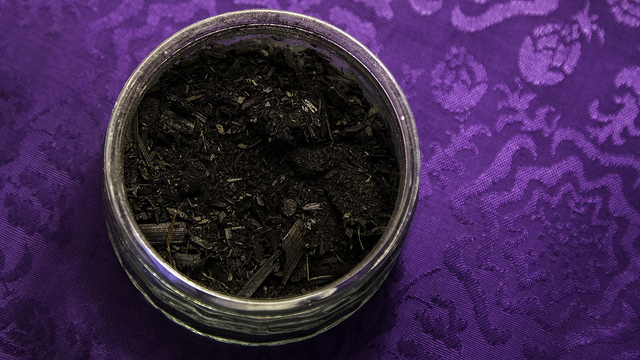
On the question of Lent
The observance of Lent has been heavy on my mind and heart these last few weeks. What could it do for my relationship with Christ, for my understanding of His sacrifice? Can liturgy take us deeper, or is it just a series of empty rituals?
Different people will tell you different things. I have a friend who left the Southern Baptists because he was drawn to liturgy, to the comfort of rituals and repeated prayers. Through liturgy, he has found a deeper connection with God. I have another who was raised Catholic and left the Church in her 40s for a decidedly non-liturgical and non-denominational Bible church. She rejects anything that even hints at liturgy now, claiming that such practices are not biblical. Still another of my dearest friends – the friend I would say most radiates Christ – was raised Catholic and yet is comfortable in any church, embracing Christians and non-Christians alike with the most boundless love.
Those who observe liturgical practices claim they are directly inspired by the life of Christ. Those who do not tend to claim they are deviations from Scripture, and seem to reject them without bothering to experience them.
Sigh. There are so many differences between those of us who make up the Body of Christ.
I was raised in the Lutheran church until I was nine, and so my childhood memories of church are punctuated with glimpses of colored vestments, ash-marked foreheads, waving palms. I was baptized, bent over a small fount of holy water, with a gentle splash to my forehead at age seven. My other Sundays, those I spent with my dad and stepmom, often meant services at the Catholic church where my stepmom had grown up. Weekend visits to my grandparents or my aunt meant the Methodist church. As a teen, I spent a few years attending my then-boyfriend’s church, a very minimalist (and strict-feeling) Church of Christ, where dancing and alcohol consumption and the use of musical instruments during worship were totally taboo, but which left me with some amazing missions experiences and more than one lifelong friend. In my twenties, I became part of my first modern non-denominational church, complete with jeans-wearing pastor and rock worship band. I was set afire. I had never experienced anything like it. My mishmash of a church background has left me with little that’s ingrained as far ritual or tradition are concerned, but with a rich history of finding God present – well, everywhere.
Where does Lent fit in to all this?
The non-denominational viewpoint seems to be that we ought to celebrate the driving forces behind the observance of Lent all year long. We ought to remember daily how Jesus willingly gave himself up on the cross for all of us. We need to continually repent of our sins and be forgiven anew. We ought to celebrate the resurrection every day, all year long.
I agree with this, but there is also something about the traditional church calendar that appeals, with its rhythms and seasons of focus on what really happened at the time of year when it happened, sort of like walking through the year in the footsteps of Jesus, His disciples, even Moses and the Israelites. Maybe this is why some of the Jewish holiday observances, like Passover, also have an appeal for me. It is easy, after all, to fall away from daily acknowledgment of the big moments in God’s story. Life is busy. It’s not easy to pause and repent, as Lent requires. Or to fix our eyes on the Cross in a way that moves us to tears, as an Easter service can help us to do.
This year, I want to grab hold of the deeper stuff of the observance of Lent, which marks the 40 days leading up to Easter. Lent is intended to be a time of repentance and reflection, a time when we prepare our hearts and minds to come face-to-face with Jesus’ death and resurrection. I want to harness the big-ness, the real-ness of the Cross this year, to let it enter into my every day for these 40 days. So I’m reading a couple of Lenten devotionals and I’ve been reading up on the history of Lent and how the observance of it has changed over the centuries, from denomination to denomination. I’m fasting from a few of my vices, so that every time I am ready to turn to one of them, I’ll be forced to turn to God instead.
This morning, I went to the Ash Wednesday Eucharist service at a nearby Episcopal church, because non-denominational churches don’t tend to “do” Ash Wednesday, Palm Sunday, Maundy Thursday, and the like. I read the hymns aloud along with everyone else. I stood and knelt when told (which left me wondering why we all don’t kneel in church, regardless of our denomination – it is so surrendering). I soaked in the words of the traditional liturgy and found them…Beautiful. Soul-filling. Comforting. Grace-filled. I took communion with a feeling of overflowing gratitude. I stood silently as the kind priest marked my forehead with ashes from last year’s Palm Sunday leaves and said quietly, “Receive these ashes as a reminder that from dust you came, and to dust you will return,” and I thought of my little brother, who is now one with the aforementioned dust, and I wept. And then I thought of Jesus, who fasted 40 days in the wilderness and then gave up his life for the likes of my everyday mess, for this girl who will one day be dust too, and I wept some more.
And in that hour, for this formerly Lutheran, mostly non-denominational girl in a back row of a sparsely populated Episcopal church, God came near, reminding me through Scripture and psalm, through the body and blood of Christ, and through a smear of ash that His grace abounds, and that these 40 days of Lent are but a brief reminder of what is ours every day, for eternity.
I can’t wait to find out what else He is going to say to me over the next 39 days.
Blessings,
Harmony
*If you don’t have much experience with Lent, but you are curious, this article is a good starting point for understanding the history and observance of Lent. If you’d like to try finding your own way through Lent, I invite you to join me in reading/studying a Lenten devotional, like this one or this one (I’m reading both). If you’d like to discuss Lent at any point during these 40 days, please drop me a comment or an email, or find me on Facebook. We’ll talk.
Photo credit: Lawrence OP. License: Creative Commons 2.0.

